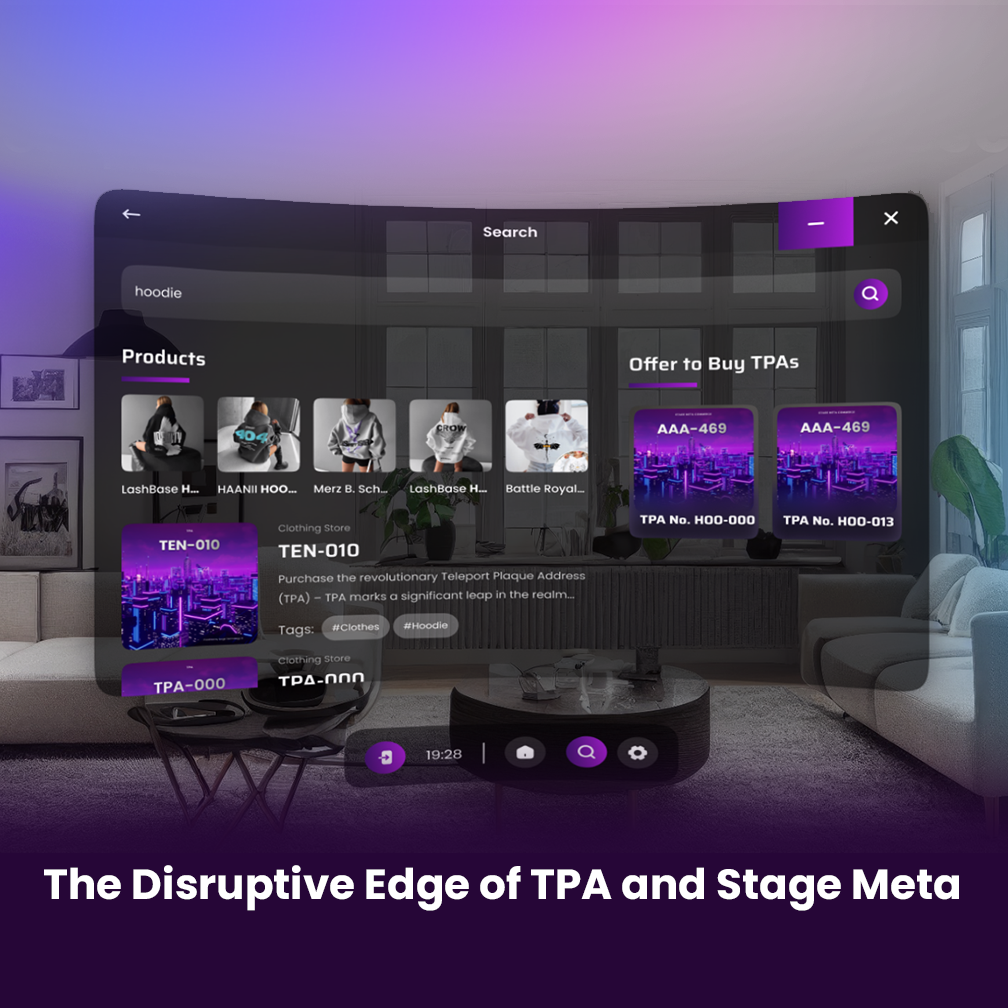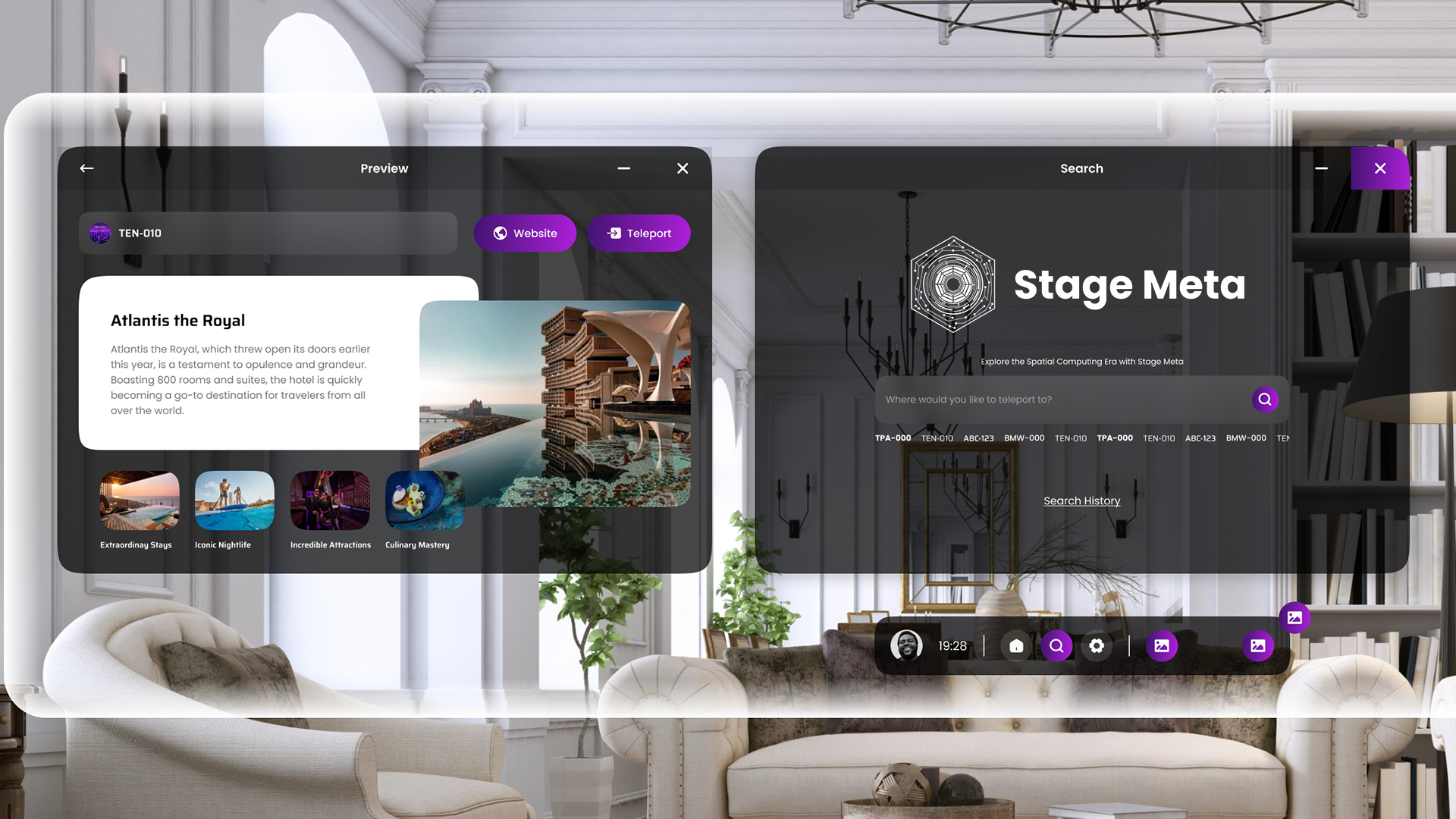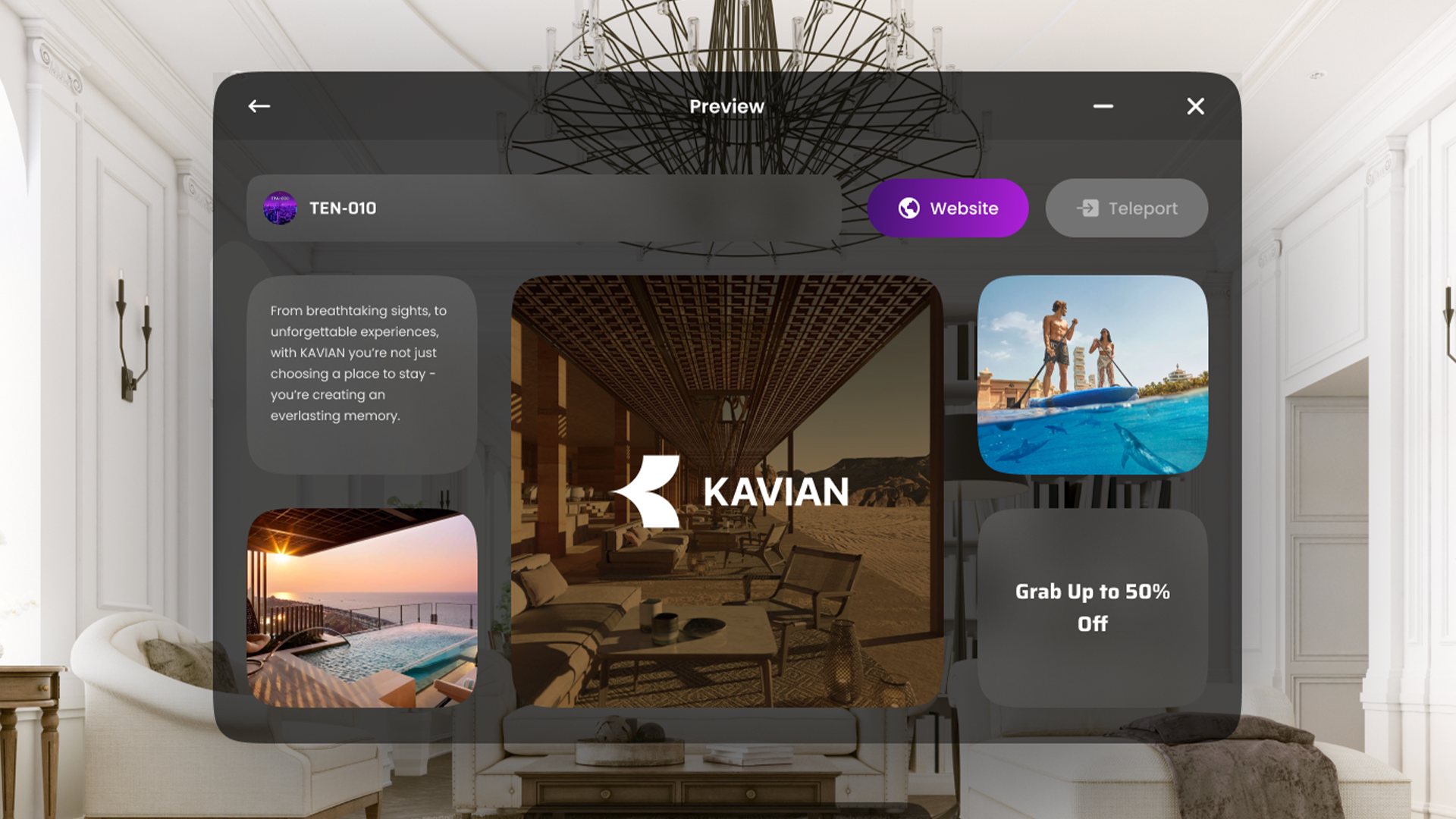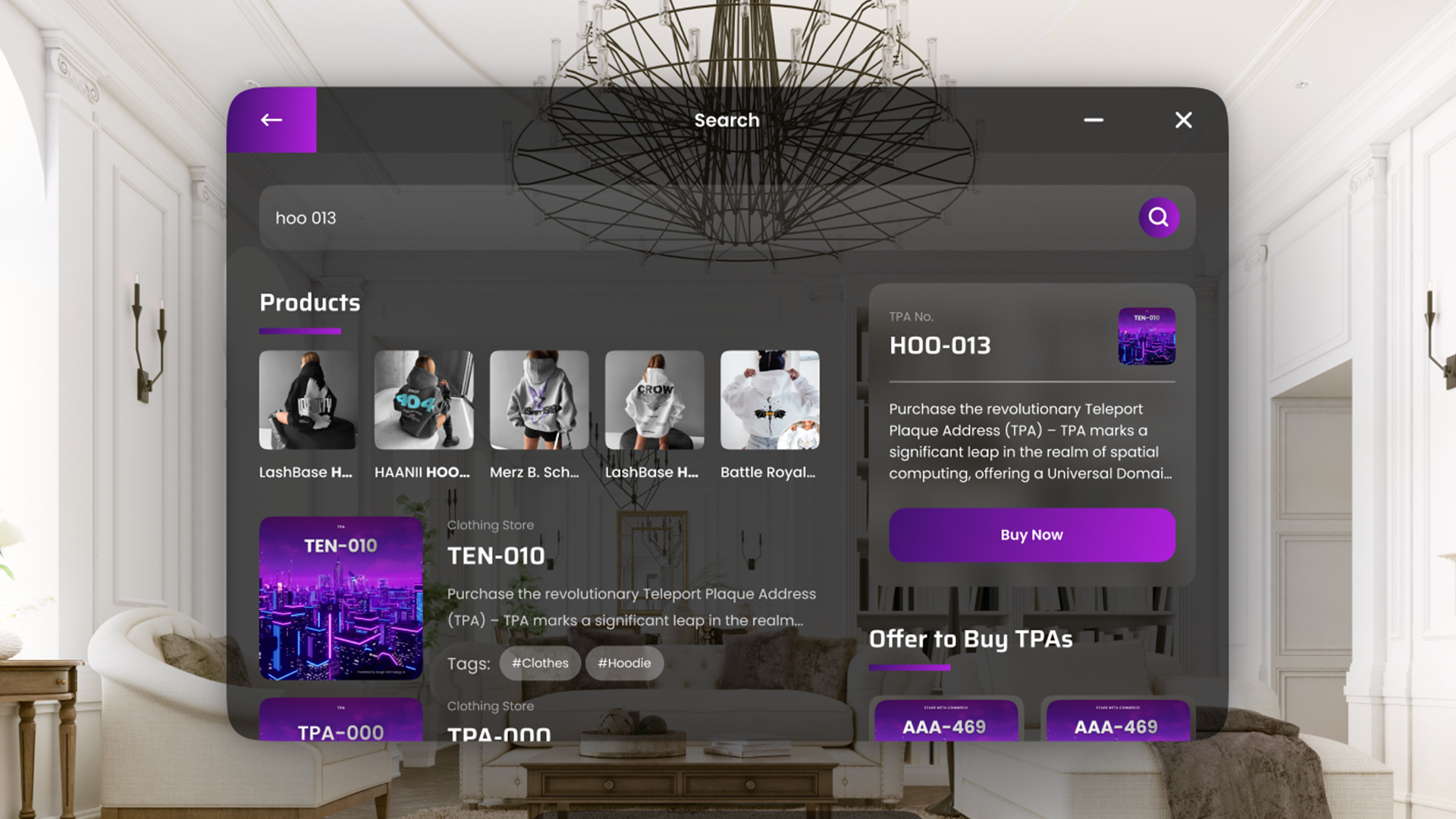The Disruptive Edge of TPA and Stage Meta in Spatial Computing

Table of contents
- Introduction
- Why TPA and Stage Meta Stand Out
- Overcoming High Development Costs and Technical Hurdles
- Bridging the Gap with Cross-Platform Solutions
- Filling the Void of E-commerce/CMS Platforms
- Democratizing Development with No-Code Builders
- Reducing High User Acquisition Costs
- Conclusion
- FAQs
- How does TPA reduce the entry barriers for developers in spatial computing?
- What makes Stage Meta a unique solution for cross platform spatial computing applications?
- How do TPA and Stage Meta revolutionize e-commerce in spatial computing environments?
- Can non-technical users create spatial computing applications with Stage Meta?
- How does the Distribution Pool in Stage Meta contribute to reducing user acquisition costs?
- What differentiates TPA’s approach to digital identity in spatial computing?
- How do TPA and Stage Meta facilitate the development of immersive content management systems (CMS) for spatial computing?
- In what ways do TPA and Stage Meta encourage innovation in spatial computing applications?
Introduction
The advent of spatial computing has ushered in a new era of digital interaction. Blending the physical and digital worlds in ways previously unthinkable. However, this promising frontier has been marred by significant barriers: high development costs, the absence of cross platform solutions, the lack of eCommerce or CMS platforms, a dearth of no-code builders, and high user acquisition costs. Enter TPA (Teleport Plaque Address) and Stage Meta. Two innovations poised to disrupt the spatial computing landscape by directly addressing these core challenges.
Why TPA and Stage Meta Stand Out
Stage Meta revolutionize spatial computing by uniquely tackling common challenges. Firstly, they enhance user friendliness, making it easier for both developers and businesses to enter the field. Moreover, their innovative solutions foster user engagement, setting them apart. Significantly, they tackle issues such as high development costs and the lack of cross platform solutions head-on. Consequently, TPA and Stage Meta have emerged as innovators, redefining industry standards and expectations. Through their efforts, they are not just participants but leaders, driving forward a more inclusive and innovative spatial computing era.

Revolutionary Addressing System
The TPA (Teleport Plaque Address) heralds a groundbreaking open source venture. Specifically adapted for spatial computing, it redefines addressing. With its straightforward, memorable format—merging three letters with three numbers—TPA greatly facilitates navigation and interaction across digital and physical realms. Producing exactly 17.576.000 unique addresses, it stands unmatched. Consequently, TPA becomes a pivotal element in spatial computing, unrivaled in providing precision and accessibility.
Stage Meta: A Platform for All
Senergized by TPA’s groundbreaking technology, transforms the spatial computing landscape. This platform empowers users to effortlessly manage their Teleport Plaque Addresses—buying, selling, trading, and innovating without additional investments or coding prowess. Additionally, it democratizes the development of spatial experiences, breaking down the barriers that often confine advanced technology to industry giants.
Moreover, Stage Meta’s dedication to accessibility ensures that cutting edge tools are within reach for everyone, from solo entrepreneurs to growing businesses. Thus, it not only makes navigating spatial environments simpler but also brings the future of digital interaction to our fingertips, championing inclusivity and innovation.
Overcoming High Development Costs and Technical Hurdles
Traditional spatial computing applications often come with steep costs, with basic app development prices in the range of $96,000 to $200,000, aside from the necessity for technical know how. However, TPA and Stage Meta are here to break apart these financial and technical barriers. Stage Meta, as an innovator in spatial computing, simplifies the crafting of digitally enhanced spaces, eliminating the demand for specialized coding abilities.
This dramatic cost reduction democratizes spatial computing, extending it to a wider audience. Consequently, financial or technical limitations no longer confine innovation, paving the way for a more inclusive future in spatial computing technologies.

Bridging the Gap with Cross-Platform Solutions
The absence of cross platform tools, similar to React or Flutter in mobile app development, significantly restricts spatial computing’s potential, confining app reach and functionality. Nevertheless, Stage Meta’s method, tailored for top devices like Apple Vision Pro and Meta Quest; brings forth a useful application. This approach allows developers to craft applications just once and deploy universally. By eliminating the need for multiple app versions on different platforms, spatial computing becomes more accessible and efficient.
Filling the Void of E-commerce/CMS Platforms
Just as Shopify, WordPress, and Wix have revolutionized eCommerce and content management for the web, TPA and Stage Meta aim to fill a similar void in spatial computing. By leveraging TPA’s unique addressing system, Stage Meta enables businesses to create immersive retail and content experiences in spatial environments. This integration not only enhances the user experience but also opens up new avenues for eCommerce, presenting products in entirely new, interactive ways, and content distribution.
Democratizing Development with No-Code Builders
The absence of no code builders in spatial computing has been a significant barrier to entry for non technical individuals and small businesses. Stage Meta addresses this gap by offering intuitive design and customization tools. Allowing users to create and tailor their technologically improved spaces with ease. This democratization of spatial computing aligns with the broader movement towards no-code platforms, enabling a wave of creators to bring their visions to life without a line of code.

Reducing High User Acquisition Costs
Attracting new users to spatial computing platforms has traditionally been a costly endeavor. TPA and Stage Meta counter this challenge by promoting a growth model driven by community. Through the Distribution Pool, TPA owners and Stage Meta users can earn rewards by engaging in activities such as user registration and participation in campaigns. This incentivized participation not only reduces the direct costs associated with user acquisition but also promotes organic growth through community engagement.
Conclusion
TPA and Stage Meta stand at the forefront of a revolutionary shift in spatial computing. By addressing the core challenges that have hindered the sector’s growth, they pave the way for a more accessible, economical, and versatile digital landscape. With their unique offerings, TPA and Stage Meta are not just participating in the spatial computing revolution. They are transforming its very foundation. This disturbance promises a future where the boundaries between the digital and physical are not just blurred but seamlessly integrated, offering exceptional opportunities for innovation, engagement, and growth.
FAQs
How does TPA reduce the entry barriers for developers in spatial computing?
TPA and Stage Meta significantly lower entry barriers by providing an intuitive platform that does not require advanced technical knowledge. Making it easier and more affordable for developers to create spatial computing applications.
What makes Stage Meta a unique solution for cross platform spatial computing applications?
Stage Meta stands out by offering a unified development environment optimized for leading devices. Thus, enabling TPA Owners to design spatial computing experiences that are accessible across various platforms without needing separate builds.
How do TPA and Stage Meta revolutionize e-commerce in spatial computing environments?
By integrating TPA’s unique addressing system, Stage Meta enables the creation of immersive and interactive stores. Offering a novel shopping experience that bridges the gap between physical and digital retail like never before.
Can non-technical users create spatial computing applications with Stage Meta?
Yes, Stage Meta democratizes spatial computing with both user friendly and no code tools. Allowing individuals without programming skills to design and customize their spatial computing environments easily.
How does the Distribution Pool in Stage Meta contribute to reducing user acquisition costs?
The Distribution Pool incentivizes community engagement by rewarding users for participating in activities that drive platform growth. Hence effectively lowering the costs associated with acquiring new users through organic community driven efforts.
What differentiates TPA’s approach to digital identity in spatial computing?
TPA offers a groundbreaking solution by providing memorable and easy-to-use unique addresses, facilitating both, precise location identification and navigation within spatial computing environments, a feature currently unmatched in the industry.
How do TPA and Stage Meta facilitate the development of immersive content management systems (CMS) for spatial computing?
They provide the infrastructure and tools necessary for businesses as well as content creators to develop, manage, and distribute immersive content in spatial environments. Filling the void of CMS platforms in the spatial computing realm.
In what ways do TPA and Stage Meta encourage innovation in spatial computing applications?
By offering an open source API, TPA and Stage Meta empower developers to integrate spatial computing functionalities into a wide range of applications. Fostering innovation as well as expanding the possibilities within the spatial computing ecosystem.









1 Comment
[…] The Disruptive Edge of TPA and Stage Meta in Spatial Computing […]